
"I started out wanting to know how we all got here. Now I'm hoping my novel is a map for how we get somewhere better." – Garrard Conley
A note from Garrard on his research:
"Why do any of this work at all? Why search for ourselves in the past, armed only with police reports, court documents, and, at best, private letters? If we have no eighteenth-century terms exactly matching contemporary LGBTQ identities, is the whole endeavor foolish? And think it’s bad for the gays? Try searching for scholarship on anything but the G. Following this logic, queer people were never so much erased but rather born fully formed in the last century as a pathology to be dealt with.
These were the animating questions I asked myself when I first sat down to write an early draft of All the World Beside. I’m not sure I ever found the answers. I have my own hunches, sure, but what I’ve come to understand about the work of queer history is that the goal is not in finding answers but in expanding the way we think about the past, the way we make assumptions, in opening up imaginative possibilities that allow us to paint the whole human canvas with the bold, bright colors we see today. We don’t have to pin all of our evidence on sex acts or sentimental declarations of love, tossing facts back and forth until the matter is no longer interesting. We can see the past as part of a larger mystery, the same mystery we see staring back at us when we look at the face of love. In my admittedly religious definition of mystery, revelation becomes possible, but the revelation will be different for each person who chooses to take the journey.
The great thing about fiction is that when you start to fill in the gaps of history the imagination grows bolder, more ambitious."

A major challenge Garrard faced when he first set out to write All the World Beside was the fact that there were so few sources that captured the lives of queer people in colonial America. However, while conducting research at the Massachusetts Historical Society, Garrard discovered several revealing letters between two men in 1800: Virgil Maxcy and William Blanding. Through the subtle (and occasionally not-so-subtle) affections weaved throughout their letters, Garrard felt a personal responsibility towards these men who seemingly had to disguise themselves even in their most intimate writing. Holding these real letters gave him a kind of artistic freedom, a “permission” to write their love story. Below, find images of the real letters exchanged:
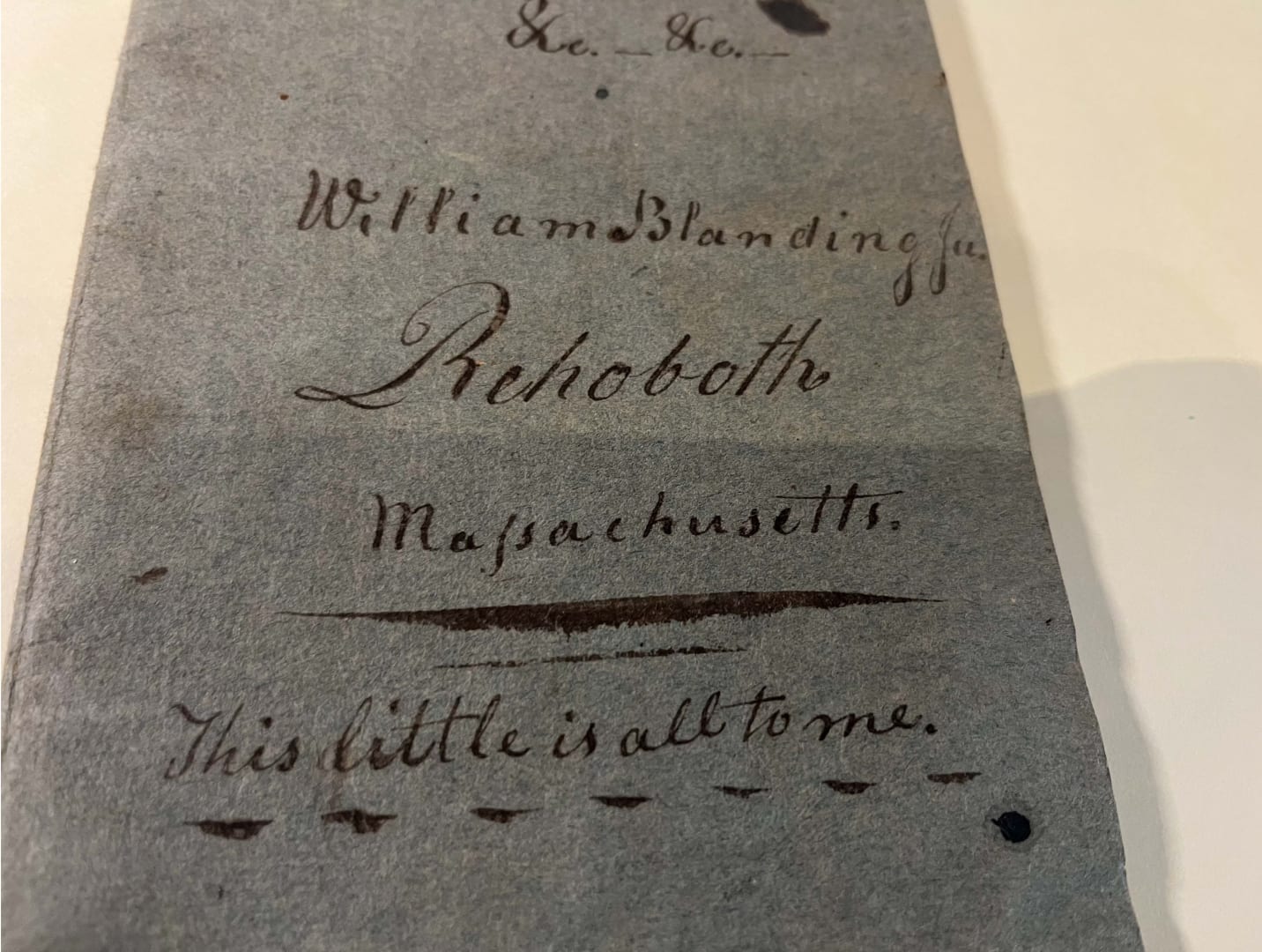
The diary of William Blanding of Rehoboth, Massachusetts.
"This little is all to me."
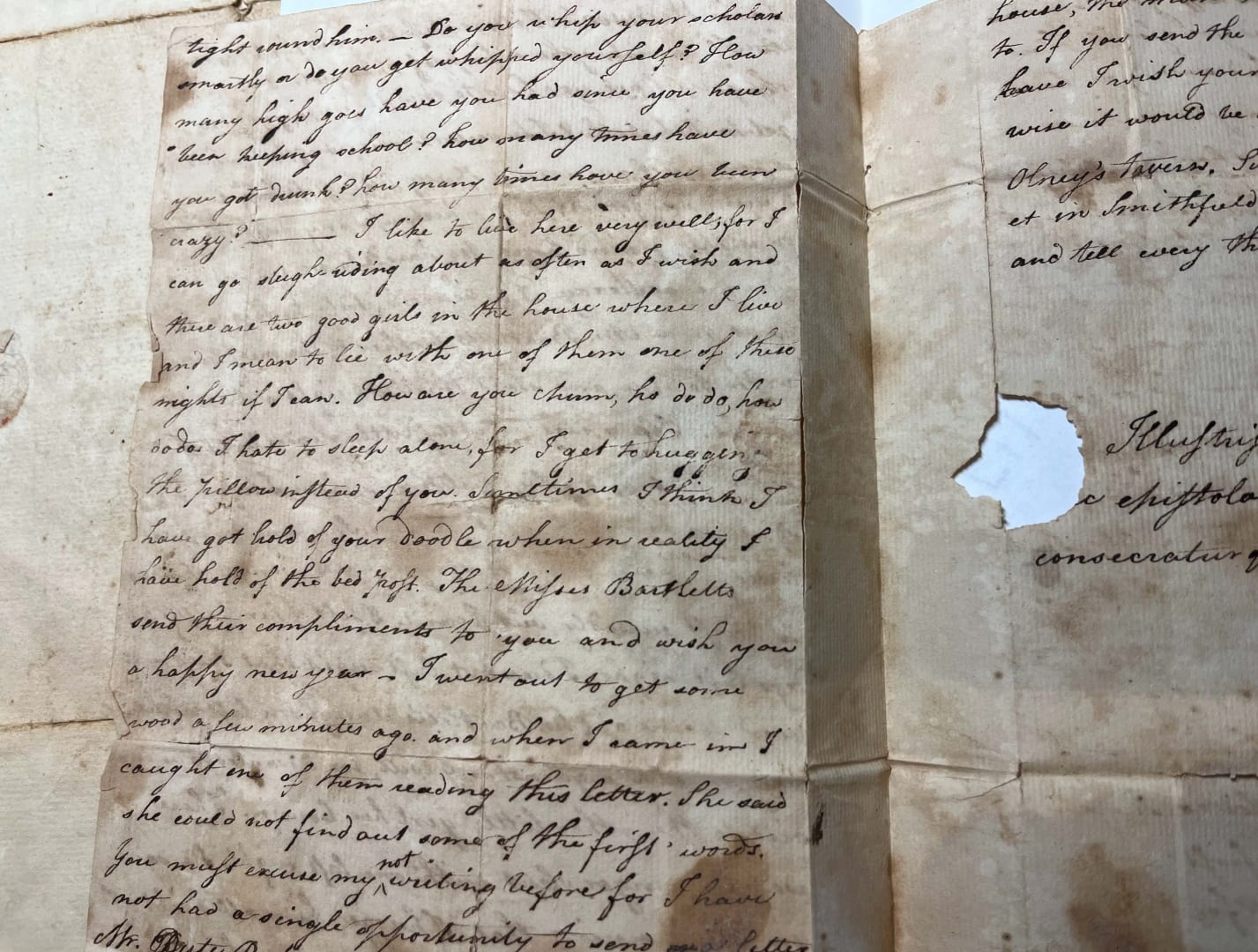
A letter from Virgil to William stating: “I get to hugging the pillow instead of you."
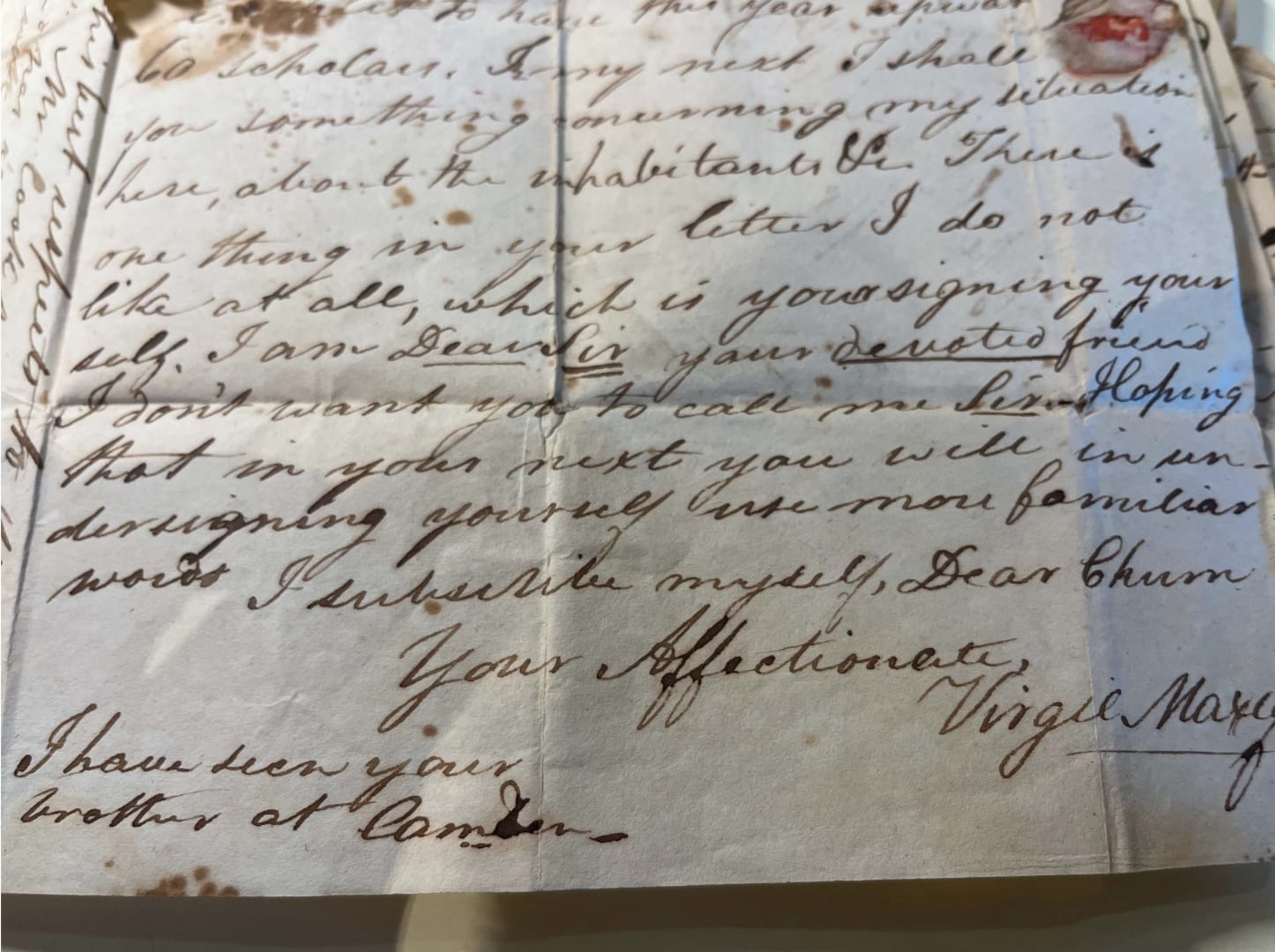
A letter for William signed "your affectionate" by Virgil.

And another letter signed by Virgil: "your cunthumble."
Upon discovering this sign-off, Garrard noted: 'This kind of advertisement might be found on hookup sites like Grindr today. “Bussy” might be a more contemporary word for “cunthumble,” but it’s not too much of a stretch to see the connection. This little bit of history lets us know we are never too far from ourselves.'

To develop the fictional New England town of Cana, Garrard conducted research on many facets of colonial life: the regional colloquialisms and terminology, the native flora and fauna of the time, clothes, food, drink, and even erotica. Below find some of the items that appear in the book:
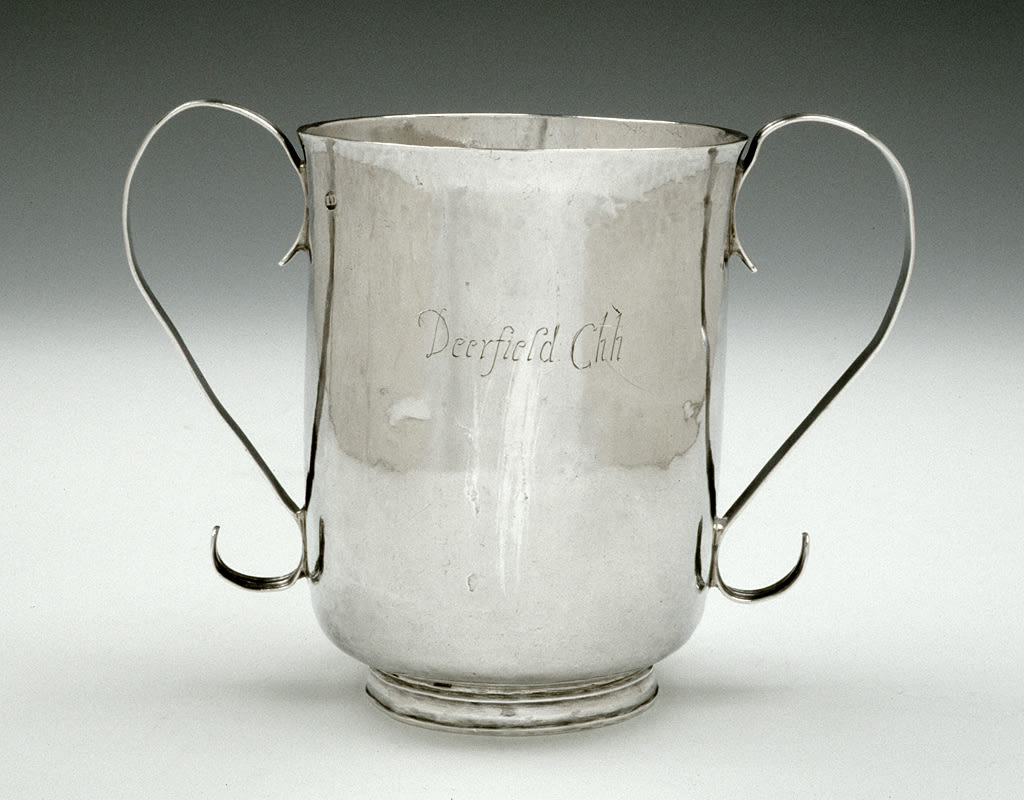
A Puritan Communion Cup
This was the kind of cup used in Sabbath services in the 18th century. In the article linked below assistant Professor Carla Cevasco says of it: "Made to be touched, the communion cup both facilitated contact between bodies and formed a body of its own...The Dixwell cup was designed to be handled by large groups of people, without any spilling of wine; however, the sheer delicacy of the handles (likely replaced at a later date) still encouraged users to grasp it carefully."
Photo: © Henry Needham Flynt Silver and Metalware Collection. Courtesy of Historic Deerfield, Massachusetts.
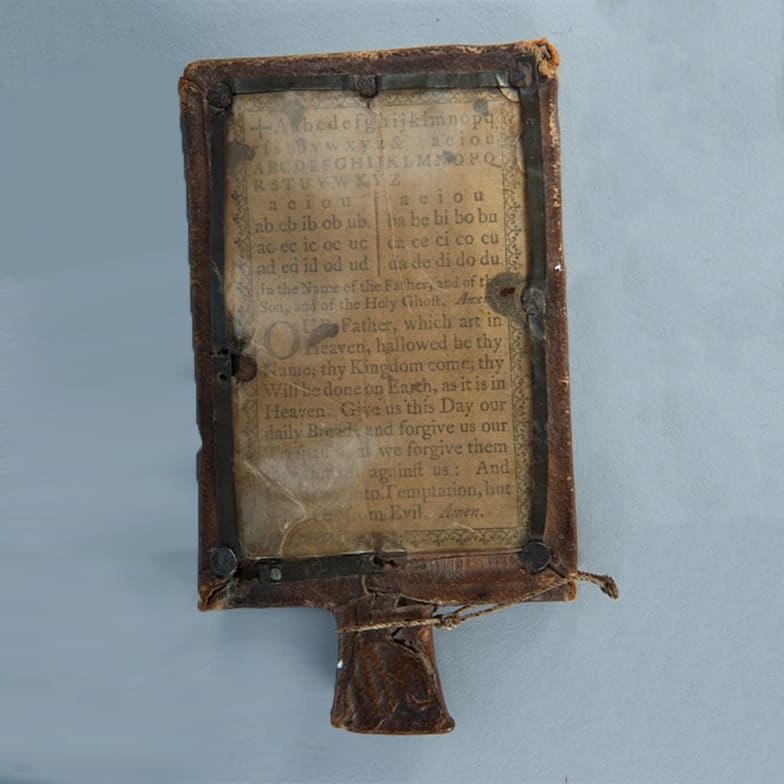
18th Century Hornbook
The hornbook was a popular learning tool young children would use to memorize anything from the alphabet to Bible verses. It ypically consists of a wooden panel mounted with a piece of paper (bearing the letters of the alphabet and the Lord’s Prayer) protected by a transparent piece of cattle horn.
Photo: © National Museum of American History

An Ormolu Clock
This clock is similar to the one you’ll find within the fictional Whitfield residence in the novel. A rarity in the Puritanical colonies. This clock istelf was designed by renowned Parisian clockmaker Jean-Baptiste Lepaute. The transparent sphere makes visible the sparkling clock’s mechanisms — the pendulum, rotating dial, and small bell.
Photo: © The Frick Collection

Church Attire
Whitfield's church attire would have included neck bands or "preaching bands." They take the form of two oblong pieces of cloth which are tied to the neck.
Photo: © The Museum of Methodism & John Wesley's House


Brooks, Joanna, editor. The Collected Writings of Samson Occom, Mohegan. Oxford University Press, 2006.
Edwards, Jonathan. A Faithful Narrative of the Surprising Work of God. 1737.
Hall, David D. Worlds of Wonder, Days of Judgment: Popular Religious Belief in Early New England. Harvard University Press, 1990.
Heimert, Alan, and Andrew Delbanco, editors. The Puritans in America: A Narrative Anthology. Harvard University Press, 1985.
LaPlante, Eve. American Jezebel: The Uncommon Life of Anne Hutchinson, the Woman Who Defied the Puritans. HarperOne, 2005.
Marsden, George M. Jonathan Edwards: A Life. Yale University Press, 2003.

Benemann, William. Male-Male Intimacy in Early America: Beyond Romantic Friendships. Harrington Park Press, 2006.
Godbeer, Richard. The Overflowing of Friendship: Love between Men and the Creation of the American Republic. Johns Hopkins University Press, 2009.
Haggerty, George E. Men in Love: Masculinity and Sexuality in the 18th Century. Columbia University Press, 1999.
Hitchcock, Tim. English Sexualities, 1700-1800. Oxford University Press, 1997.
Kramer, Larry. "Queer Theory’s Heist of Our History." The Gay & Lesbian Review, Sept/Oct 2009.

Hess, Karen, transcriber. Martha Washington's Booke of Cookery and Booke of Sweetmeats. Columbia University Press, 1981.

"The Plymouth Colony Archive Project." Plymouth Colony Archive Project, University of Virginia, 1997.
Deetz, James. In Small Things Forgotten: An Archeology of Early American Life. Anchor Books, 1996.
Hawthorne, Nathaniel. The Scarlet Letter. Foreword by Tom Perrotta, introduction by Robert Milder, notes by Thomas E. Connolly, Penguin Classics, 2009.
Now in paperback!

“A heart-wrenching story of love, family, and spirituality.” —People Magazine
Cana, Massachusetts: a utopian vision of 18th-century Puritan New England. To the outside world, Reverend Nathaniel Whitfield and his family stand as godly pillars of their small-town community, drawing Christians from across the New World into their fold. One such Christian, physician Arthur Lyman, discovers in the minister’s words a love so captivating it transcends language.
As the bond between these two men grows more and more passionate, their families must contend with a tangled web of secrets, lies, and judgments which threaten to destroy them in this world and the next. And when the religious ecstasies of the Great Awakening begin to take hold, igniting a new era of zealotry, Nathaniel and Arthur search for a path out of an impossible situation, imagining a future for themselves which has no name. Their wives and children must do the same, looking beyond the known world for a new kind of wilderness, both physical and spiritual.
Set during the turbulent historical upheavals which shaped America’s destiny and following in the tradition of Nathaniel Hawthorne’s The Scarlet Letter, All the World Beside reveals the very human lives just beneath the surface of dogmatic belief. Bestselling author Garrard Conley has created a page-turning, vividly imagined historical tale that is both a love story and a crucible.
Available wherever books are sold:
